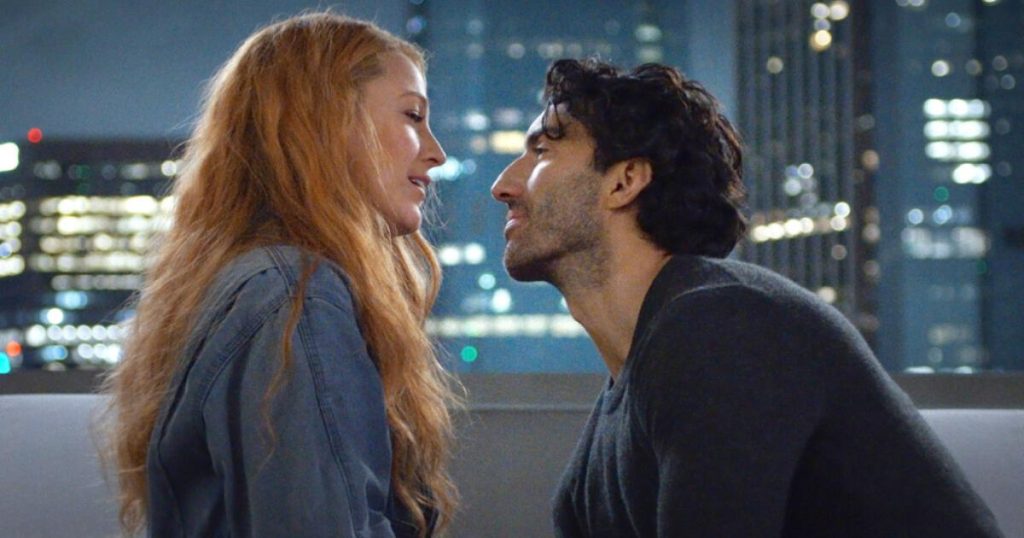What could happen when three lawyer friends get together to watch a movie? Of course there was lots of fun, popcorn, chocolates, gossip and, inevitably, a chat about our very personal opinion of the movie “It Ends With Us”.
Diana, who is a legal advisor in a Family Counselling Centre, said: “As the film progressed, I could not stop thinking about my work, about the cases I see every day, domestic violence, abuse in all its forms and in all social strata and, of course, about the protocol that the victim follows in these cases; actions that guarantee the protection of the victims, their recovery and the restitution of rights”.
For Kelly, who is a lawyer and head of internal control, her perspective is more conciliatory: “I do not justify violence in any case, but taking into account the context of the film and that we all have a past with issues to resolve, I believe that Ryle, Lily’s husband, deserved a second chance, because we are all human and no one is perfect”.
My position is very similar to that of the film which, of course, you should watch if you like these kinds of themes related to domestic violence and emotional abuse, and how past conflicts can be resolved in the present.
Starring Blake Lively, Justin Baldoni and Brandon Sklenar, “It Ends With Us” is based on the romance novel of the same name by Colleen Hoover, published in 2016.
As of 2019, the novel sold more than one million copies worldwide and it has currently been translated into more than 20 languages. The movie was released in August of this year with a film adaptation and screenplay by Christy Hall and direction by Justin Baldoni.
The #sinrecato question is: why doesn’t the assaulted woman leave her aggressor? and there is no single answer, because cases are not all the same, and more questions arise, such as “why doesn’t she denounce him?” or “why do they withdraw the report?”.
Julia Uliaque Moll, a forensic and health psychologist at the University of Barcelona, explains: “The victimization process is not a one-off, isolated situation, but something that develops over time. A relationship where abuse exists does not happen overnight. It is a process that often begins in a subtle way, and the victim is not always aware of the seriousness of the situation they are experiencing”.
In 1979, the renowned American psychologist Leonore Walker revealed how victimization processes work based on her research designed to understand and provide answers to the above questions.
To reach these conclusions, the psychologist listened to the testimony of battered women and realized that the aggressions did not occur in the same way or all the time, and discovered that there are phases to the violence, which have different durations and manifestations.
This theory is known as the cycle of violence and consists of four phases. The phases into which this cycle is divided occur one after the other, and this is precisely what does not allow the cycle to be broken. In the same relationship, this cycle can be repeated infinite times and the duration of the phases is variable. These are:
- Calm phase: in this phase there are no disagreements, everything is perfect. But when the cycle has been repeated many times, the victim understands that as long as everything is in the “right way”, as the aggressor wants, there is calm. The aggressor is the engine of the cycle.
- Tension accumulation phase: there are small disagreements and the aggressor begins to exert psychological abuse based on control. Some aggressors justify themselves because the victim did not listen to them and provoked them.
The woman tries to calm or please her partner with the unrealistic belief that she can control him. However, over time, the victim adopts self-defense mechanisms to avoid the aggression.
- Explosion phase: In this stage, the physical, psychological and/or sexual aggressions take place and, although it lasts a short time, it is the most intense one. The victim has the expectation that her partner will change or, on the contrary, that she deserves it for provoking him.
- Honeymoon phase: The aggressor shows the victim his remorse and promises that it will not happen again. In this stage, the perpetrator is overly kind and affectionate and talks to family and friends to convince the victim to forgive him.
In response to this, some women withdraw the complaint or return to the aggressor, but as time goes by, this phase disappears and only the other three remain: calm, accumulation of tension and explosion.
Some victims say that “as long as he doesn’t yell at me or abuse me, that’s enough for me”. In this way, they normalize the aggressions, which become more and more frequent and stronger, trapping them in the circle of violence.
Experts confirm that battered women are not to blame for what has happened to them, but they are responsible for their recovery in therapy.
The most important thing is to prevent a new situation of future violence and to have the necessary tools to identify the signs that indicate when a relationship is not healthy.
Although I have not gone through a situation similar to that of Lily Bloom, the protagonist of the film, I do agree with a phrase she said that sums up this issue: “And as hard as this choice is, we break the pattern before the pattern breaks us”.
Traducción del español: Catalina Oviedo Brugés
















